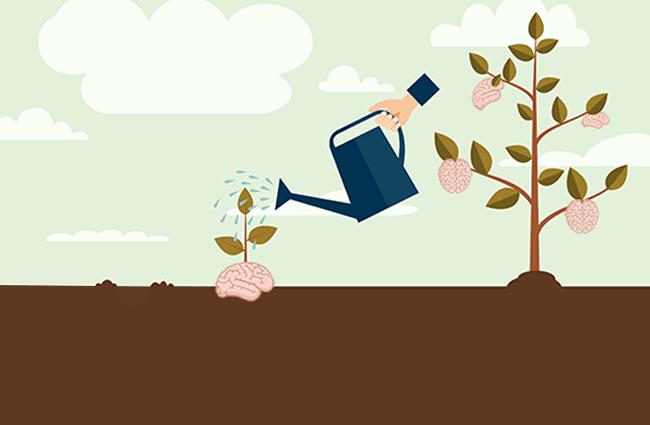Who formulated the golden rule of didactics and introduced it to the general public? What is its essence? What is it for? How should existing knowledge be used? These, as well as a number of other issues, will be considered in the framework of this article.
Introductory information
You should start with the person who formulated the golden rule of didactics. This is Jan Amos Comenius - a Czech philosopher, humanist thinker, writer and teacher. He wrote more than two hundred scientific works. Among them there are socio-political and theological works, works on linguistics, geography, geometry, cartography, physics, sermons, instructive treatises, textbooks in Czech and Latin, literary works and much more.
Start
The theory of universal universal education for scientists was presented in the "Didactics", which was created in the years 1628-1630 in Czech. Recycled, expanded and translated into Latin labor is the basis of the theoretical base for the secondary educational level. It was created in the years 1633-1638.
What does the golden rule of didactics by J. A. Komensky sound like?
“... everything should be presented to the external senses, as far as possible, namely: visible - to sight, audible - to hearing, smelling - to smell, tasted - to taste, tangible - to touch, if something can be perceived by several senses at the same time, then imagine this subject is simultaneously to several senses. " This is what the golden rule of didactics of J. A. Comenius is. But just reading and learning about it is not enough. It is also necessary to understand. Make it much more difficult than it might seem at first glance.
About visibility
It performs the function of the main source in obtaining knowledge. Ya. A. Komensky understood visibility widely. It was based not only on visual perception. The scientist believed that it was necessary to attract all the senses. This is necessary in order to provide a better perception of things and phenomena. The essence of the golden rule of didactics is perception, because it is thanks to it that objects can be captured in creation. Comenius believed that only after everyone got acquainted with the subject of study, he could be given explanations. Visibility can be achieved in cases where the subject of assimilation is presented in a sensual form. All this is examined in great detail by the so-called "Great Didactics" of Comenius, which is a Latin version of the work of this scientist.
And how in practice?

Ya. A. Komensky well understood that simply to demonstrate an object is not enough. The teacher must show what is being studied as a whole from various angles. It is also necessary to decompose the object into parts in front of the students, give a designation of each component and combine everything into one whole. This principle of Comenius’s teaching (the golden rule of didactics) was reflected in the textbook of the thinker “The visible world in pictures”. This book is considered a very good example of the implementation of a new pedagogy. A large number of drawings were collected in it. Under each of them was a verbal description made in different languages. This approach has proven itself well when teaching foreign words. It should be noted that the scientist did not set himself the task of fundamentally restructuring the existing curricula. He believed that the flaws present in the old scholastic approach could be eliminated. To do this, just imagine everything clearly.
In more detail about the principle of visualization in training
What is there to know about? What principle of teaching implies the golden rule of didactics we have already figured out. But why exactly it? The fact is that the principle of visualization is one of the most popular and intuitive. It has been used since ancient times. We also know that it is based on scientific laws. Namely, the sense organs have a different reaction to different external stimuli. For books was characteristic supply of drawings. But this was an empirical application of visibility when there was no theoretical justification. Comenius in his research was guided by sensualist philosophy. It was based on sensory experience. The scientist was able to theoretically substantiate and reveal in detail the principle of visualization.
Application and extension of developments
So, it has already been examined what the golden rule of didactics means. But to think that it was simply formed in the seventeenth century and has remained unchanged is a mistake. The achievements of the Czech scientist were regularly improved. For example, they gained wide distribution not only in the study of languages, but also in mathematics. This is due to the fact that you need to achieve a very high level of abstraction. More than studying other subjects. Thanks to the request for the development of abstract thinking, this approach has gained popularity in this case. It should be noted that the greatest merit of Comenius is that he was able to genuinely substantiate, generalize, deepen and expand the already existing at that time certain experience of visual training. He widely applied visibility in practice, the most famous example of which are his textbooks with drawings.
The influence of other scientists
Comenius is not the only person who paid significant attention to the principle of visualization and used the golden rule of didactics. We should also recall the work of Jean-Jacques Rousseau. His didactics was based on the position that the child needs to develop independence, quick wit and ability to observe. Information should be provided to the human perception with maximum clarity. As an example, nature and life facts were brought in, with which the child was supposed to get acquainted directly. Johann Heinrich Pestalozzi devoted his time to the justification of visibility. He believed that without its use in the broad sense of the word, it is impossible to get the right ideas from the person about the world around him and it is very problematic to develop the thinking and speech of a person. It should be noted that Pestalozzi did not know all the information about the pedagogical system of Comenius, although he knew his books.
The influence of Russian thinkers and educators
First of all, it is necessary to mention Konstantin Dmitrievich Ushinsky. Based on the psychological specifics of childhood, he also paid substantial attention to the principle of visualization. His use in teaching, he believed, should create specific images that are directly perceived by the child. After all, abstract ideas and words cannot make it clear what and how it is in reality. The educational work carried out in the elementary grades should be based on the laws of development of children and the requirements of school didactics and pedagogy. At the same time, direct perception of reality has a great influence. This is very important in preschool years, as well as in the lower grades. When children learn about the world around them, various analyzers take an active part in this: auditory, visual, motor and tactile. Ushinsky in particular noted that they think in images, colors, sounds and sensations in general. Therefore, for children it is necessary to conduct visual training, which will be built not just on abstract ideas and words, but using specific images. Moreover, those that can be perceived by the child directly. The golden rule of didactics allows emphasizing the pattern on the basis of which the development of children of this age is carried out. Let's look at an example with mathematics, which is important to understand in the lower grades, because then to deal with it will be problematic. The task is to ensure the connection between the concrete and the abstract. For what and why? This allows you to create an external support for the internal actions that are performed by the child. It also serves as the basis for the development and improvement of conceptual thinking.
We continue about Russian thinkers and educators

A little more about Ushinsky. Justifying the use of the principle of visualization of learning, he pointed out that the only source of human knowledge is experience that was communicated through the senses. So much attention is paid to this man for a reason. He had a strong influence on the theoretical development, as well as the application of the principle of visualization. For example, Ushinsky provided a materialistic justification for all this. He has no reappraisal, like Comenius, does not meet pedantry and formalism, like Pestalozzi. Ushinsky considers visibility as one of the conditions that allows students to get full knowledge and contributes to the development of logical thinking. The next outstanding mind that needs to be remembered is Leo Tolstoy. He accustomed students to observation and paid great attention to the vitality of teaching. Lev Nikolayevich actively used excursions, experiments, tables and pictures, showed genuine phenomena and objects and their natural, natural form. He paid tribute to the principle of visualization. But at the same time, he critically ridiculed the perversions that German methodologists recommended in carrying out "subject lessons." Another person who left a mark after himself is Vasily Porfiryevich Vakhterov. He argued that the development of the child during the educational process is a natural phenomenon in life. In this case, the task of the teacher is to use such methods of education and training that will take into account the age and individual characteristics of the student. It is necessary to focus on the level of development of creative and cognitive abilities. According to Vakhterov, this is the main problem that should be solved during training and education.
Conclusion
So the principle of visualization, the golden rule of didactics and their role in the educational process are considered. It must be remembered that this is not a goal, but only a tool for understanding the world and developing students' thinking. For if you are too keen on visualization, then it can become an obstacle to gaining really deep knowledge. This is expressed in the inhibition of the development of abstract thinking and understanding of the essence of general laws. To summarize, it should be said that the use of visual aids throughout the history of mankind occupied the minds of teachers and scientists. And it remains relevant to this day.